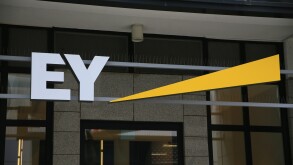The European Commission has adopted guidelines for supporting investments in the reduction of emissions and greenhouse gasses, climate neutrality, climate change adaptation, resource and energy efficiency and the ‘Energy Efficiency First’ principle, circularity, zero pollution and recovery of biodiversity, and accompanying that green transition in order to accelerate the achievement of the European Green Deal (Green Deal).
Supporting businesses taking measures that lead to the reduction of emissions is vital to achieve one of the goals of reducing these emissions by at least 55% by 2030 or the new renewable energy target by 2030, as set by the Green Deal.
However, member states must also comply with the existing European state aid rules, which do not allow granting support to business in a selective manner. In practice, these rules are putting important restrictions on what is possible in terms of incentives. The updated guidelines provide a framework adapted to today’s challenges in which businesses can be supported for investment in Green Deal related subjects.
To put it in the words of the European Commission: “State aid may be necessary to contribute to the achievement of those Union targets and related national contributions”.
Existing guidelines for green investment support were outdated
The EU is very ambitious with respect to climate protection, for example, being climate neutral by 2050 (Green Deal) or the ‘Fit for 55’ package including the ambition to reduce net greenhouse gas emissions by at least 55% by 2030.
In 2014, the European Commission published a communication with guidelines on state aid for environmental protection and energy 2014–2020 with the aim to help achieve the targets regarding climate change and energy sustainability.
With the new and more ambitious goals, the ‘Guidelines on State Aid for Environmental Protection and Energy’ (EEAG), in place since 2014, are outdated as it did not cover many (new) categories of state aid relevant to the Green Deal. Hence the replacement of the EEAG by the revised ‘Communication from the European Commission with Guidelines on State Aid for Climate, Environmental Protection and Energy 2022’ (CEEAG), published on January 27 2022. The CEEAG is applicable as from its date of publication.
What are the main building blocks of these new guidelines?
The CEEAG have broadened the categories of investments by which member states can support the achievement of the Green Deal.
The aid covered concerns both (i) incentivising investments in projects aiming for reduction of greenhouse gasses or green energy (such as aid for reduction and removal of greenhouse gas emissions, improvement of energy and environmental performance of buildings, acquisition and leasing of clean vehicles, district heating and cooling, etc.); and (ii) aid in the form of tax reductions or levies such as reductions from environmental taxes and parafiscal levies or reductions in the form of reductions from electricity levies applicable to energy-intensive users.
For each type of aid the CEEAG describe the aid, the rationale, the scope and activities supported as well as how the distortion of the competition and trade should be minimised (i.e. the aid must be necessary, appropriate and proportional).
With the scope and supported activities known, an insight is provided in the many forms of aid and aid intensity becoming available. A particular member state may opt to support investments in, for example, the reduction or removal of greenhouse gasses, renewable energy, low-carbon energy production, high-efficiency cogeneration or even energy storage.
The nuance has to be made, of course, that the aid intensity is not unlimited. Member s tates are obliged to limit the aid granted to a predetermined percentage of the total, eligible investment. In concrete terms, one observes the revision regarding possibilities of member states to lowering electricity charges for companies.
The CEEAG and its opportunities for businesses
In comparison to the EEAG, the CEEAG allow for higher aid intensities in a wider range of topics, in turn stimulating EU stakeholders to move towards greener activities and investments, thus, furthering the aims of the EU.
The concretisation of these guidelines will result in the introduction of a wide array of new (local) incentive programmes. It may not be easy to find out about all the incentives that are available for your business or investment plans.
The Government Incentives Scanner, powered by PwC, provides a full overview of the newly introduced opportunities, allowing interested stakeholders to browse relevant opportunities, manage their incentives and benchmark their incentive efforts on one centralised platform. Please visit the Government Incentives Scanner for further information.
Gilles Van Hulle
Senior associate, PwC Legal
Pierre Demoulin
Manager, PwC













